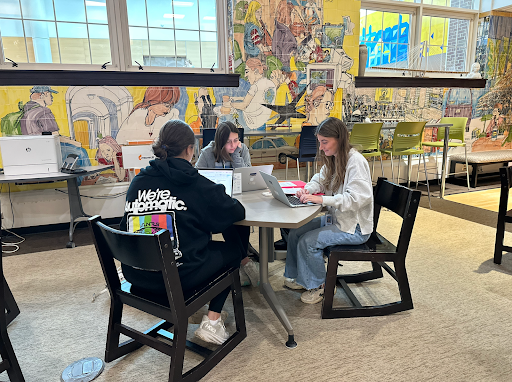Working in solitude and silence is often believed to be the most effective working method. I disagree. Working alone neglects a key skill that is essential for success: collaboration.
Testing should be more collaborative, as it can cause a great deal of stress for students. From my personal experience, there’s nothing more discouraging than spending a week studying, only to encounter a test question and blank on the answer.
While studying is very beneficial for reinforcing knowledge and building discipline, it’s beyond frustrating when you forget something during the exam, only to remember it right after turning it in.
Having a partner to collaborate with would be beneficial for both students and change this dynamic for the better. If one person remembers the answer, it’s an opportunity to re-teach what has been forgotten and further comprehend it.
Why should one student receive a worse grade for something that couldn’t be remembered momentarily when a partner could have easily collaborated?
Reminding and helping each other with certain things is far more effective than leaving answers blank or resorting to guessing.
High school students have limited freedoms during school hours. To further clarify, when you are giving instruction, you usually follow it without further questioning.
Growing up, I have been taught how to be an independent learner and thinker–not a collaborative one. I believe this system is inherently flawed.
When students enter the real world, most jobs require teamwork, as it is an important asset.

According to the Indeed Editorial Team, the number one skill employers seek for is communication skills. As students, we need to be ready to join conversations with other people and be able to succeed in these settings.
Teachers in high school will stress “no talking during a test” or “no working with partners,” but to what end? Just to get out into the real world and do the exact opposite?
Companies value employees who have experience working with others and have the ability to collaborate.
Think about it, students are encouraged to join clubs or sports teams because these environments foster collaboration. Whether that is a hockey team or in a robotics club, people perform better and make more sensible decisions when working toward a shared goal.
When scientists manage to discover massive breakthroughs of a newly developed medicine, it is never one singular scientist who did the work all alone. They are the product of collective effort–brick by brick, brain by brain, something is built up.
During a study led by Bahador Bahrami of the Interacting Mind Project, two participants worked together or in isolation to make decisions about visual images. Research showed two heads were indeed better than one. The volunteers combined their insights and reached a level that “none of the players could possibly achieve as an individual.”
The key to this success was communication and cooperation.
It’s time for the education systems to reflect on this reality. If collaboration is the foundation of success in the real world, why not start practicing it now?








